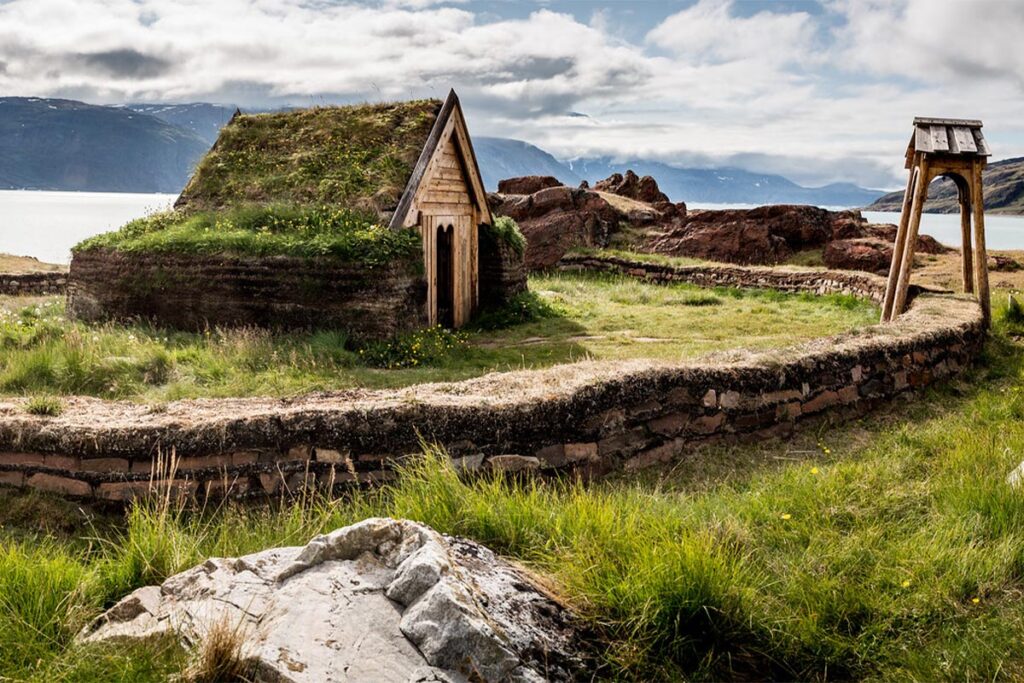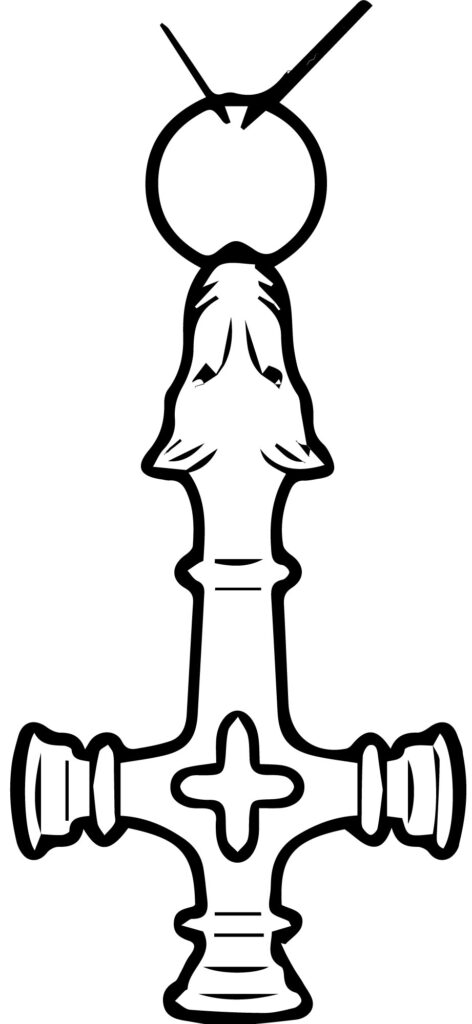
The first Christian church in Greenland, build by Þjódhild Jorundsdottir, the wife of Erik “The Red” Þorvaldsson
Before the introduction of Christianity, most people in Northern Europe were not part of an organized religion, but practiced some religious traditions that varied greatly from place to place, and changed over time.
The faith of the Æsir, Vanir, Jótunn, Elfur, etc. was not organized into a congregation, and there were no priests or books.
Introducing a new religion to these people was no problem, and many embraced the “White Christ” without much concern.
However, getting the Scandinavians to stop believing in Odin, Thor and Freyja turned out to be a considerably greater challenge.
Therefore, the transition from “The Old Ways” (the Æsir faith) to “The New Ways” (Christianity) is a period from about the year 700 to the year 1350.
In the year 970, Scandinavia became officially Christian, according to the great Jelling stone.
To simplify this, and have some landmarks in history, we can say that Christianity lasted from 950 to 1950, in Scandinavia.
Regardless of whether we say that the Viking Age lasted from the year 300 to the year 1300 (in Scandinavia) or whether we say from the year 793 to the year 1066 (the Anglocentric model), we can state that with a population increase in the same period, the majority of the Scandinavian population were Christians in the Viking Age.
Another measuring stick is runestones, over 80% of which were made and erected by Christian Vikings.
Christianity came slowly, but changed society in many ways, especially at the expense of women.
Before Christianity, most shamans (“Völver”) were women, and the importance of women in sacrificial rituals (“Blót”), magic rituals (“seiðr”) etc. was significant.
Being unmarried and pregnant, or divorcing one’s husband, was not a huge problem, and did not entail automatic ostracism from society.
Officially, the women stood as owners of houses or farms.
The almost-perfect equality that we know in Scandinavia today also existed in pre-Christian society.
You can say that women have been under house arrest for the 1000 years Christianity lasted.
In the transition period, Christian ideas even influenced the Æsir faith in many ways.
Wearing a cross on a necklace as protection and to identify oneself as a Christian was adopted by the Æsir believers, who began to use Thor’s hammer (“Mjölnír”) in the same way.
In several graves, both Thor’s hammer and crosses have been found, and in some cases symbols that can be perceived as a morph of the two.
For very early finds, however, it is important to remember that the cross is a very simple graphic symbol with many possible meanings, and thus not necessarily linked to Christianity.
The Christianity that came to Scandinavia was, however, a highly diluted version, compared to what we see elsewhere in Europe, in the early Middle Ages.
Many compromises have been made, and the church has been forced to accept that many traditions persisted. Most obviously the term “Jul”, instead of “Christmas”, but also that Christmas became a celebration of nature’s abundance, instead of fasting.
The Vikings occupied England, and subsequently England occupied many other countries in the world, and in this way many pre-Christian Viking traditions have been spread to almost the whole world.
Christianity took some hard hits during the Enlightenment, and the two world wars were the final nail in the coffin.
Today, the majority of Scandinavians are members of the national Lutheran churches, but only use the church on special occasions: Baptism (30%), Confirmation (40%), Weddings (30%) and funerals (60%). Less than 2% go to church without a specific invitation, and the number of Scandinavians who believe in the biblical God is very close to 0%.

The wolf cross, found in Iceland, is obviously a cross decorated with a wolf. If the cross is associated with Christianity is impossible to determine, but likely.
Some archeologists believe it’s a morph between a Christian cross and Mjölnír.
